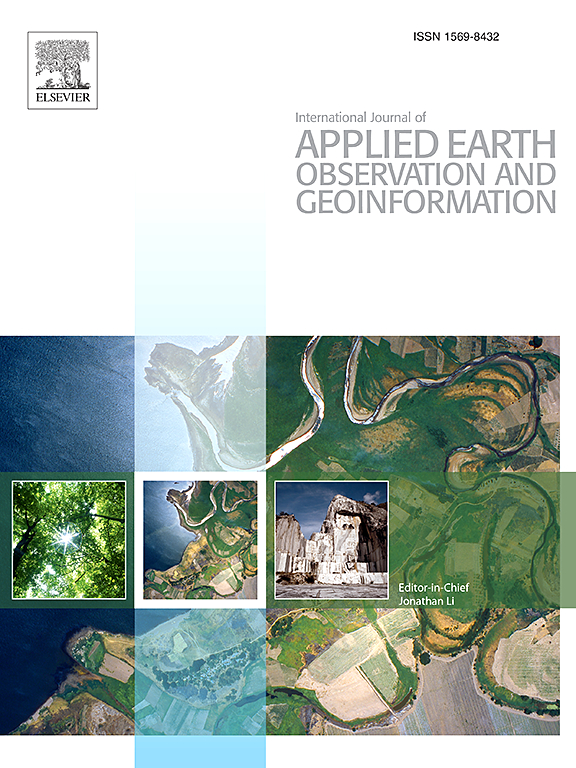Interpreting regional characteristics of heritage houses based on 3D digital landscape and point cloud deep learning – Take Tibetan houses in the northeastern region of Aba prefecture as an example
IF 7.6
Q1 REMOTE SENSING
International journal of applied earth observation and geoinformation : ITC journal
Pub Date : 2025-06-25
DOI:10.1016/j.jag.2025.104695
引用次数: 0
Abstract
This study proposes an application framework for automatically interpreting regional characteristics of heritage houses with the support of 3D digital landscape (3D-DLS) and point cloud deep learning (PC-DL) models, taking the northeastern region of Aba prefecture as an example. The significant contribution of this framework is introducing (1) the self-developed MSBFI model to decode the quantitative discriminative logic of the PC-DL model in categorizing the regional characteristics of heritage house point clouds, and (2) how it combines the generated saliency point clouds and the semantic segmentation point clouds to automatically filter the feature elements of each sub-region and analyze the regional characteristics of heritage houses. The proposed framework can adaptively calibrate multi-scale sensitivity weights, demonstrating strong compatibility with built heritage studies through its focused analysis of composite building scales, while maintaining superior computational efficiency. The conclusions of this framework on heritage houses are more quantitative, objective, and validated by the relevant field survey studies. In addition, this study fills the gap in interpreting the regional characteristics of Tibetan houses on a whole-area scale in the northeastern region of Aba prefecture.
基于三维数字景观和点云深度学习的古建筑地域特征解读——以阿坝州东北部藏式民居为例
本研究以阿坝州东北部地区为例,提出了基于3D数字景观(3D- dls)和点云深度学习(PC-DL)模型的遗产建筑地域特征自动解读应用框架。该框架的重要贡献在于,引入了(1)自主开发的MSBFI模型,解码PC-DL模型在对文物建筑区域特征进行分类时的定量判别逻辑;(2)如何将生成的显著性点云和语义分割点云相结合,自动过滤各子区域的特征元素,分析文物建筑的区域特征。该框架可自适应校准多尺度灵敏度权重,通过对复合建筑尺度的集中分析,与建筑遗产研究具有较强的兼容性,同时保持较高的计算效率。该框架对文物建筑的结论更加量化、客观,并通过相关的实地调查研究得到验证。此外,本研究填补了在阿坝州东北部地区全区域尺度上解读藏族民居地域特征的空白。
本文章由计算机程序翻译,如有差异,请以英文原文为准。
求助全文
约1分钟内获得全文
求助全文
来源期刊

International journal of applied earth observation and geoinformation : ITC journal
Global and Planetary Change, Management, Monitoring, Policy and Law, Earth-Surface Processes, Computers in Earth Sciences
CiteScore
12.00
自引率
0.00%
发文量
0
审稿时长
77 days
期刊介绍:
The International Journal of Applied Earth Observation and Geoinformation publishes original papers that utilize earth observation data for natural resource and environmental inventory and management. These data primarily originate from remote sensing platforms, including satellites and aircraft, supplemented by surface and subsurface measurements. Addressing natural resources such as forests, agricultural land, soils, and water, as well as environmental concerns like biodiversity, land degradation, and hazards, the journal explores conceptual and data-driven approaches. It covers geoinformation themes like capturing, databasing, visualization, interpretation, data quality, and spatial uncertainty.
 求助内容:
求助内容: 应助结果提醒方式:
应助结果提醒方式:


